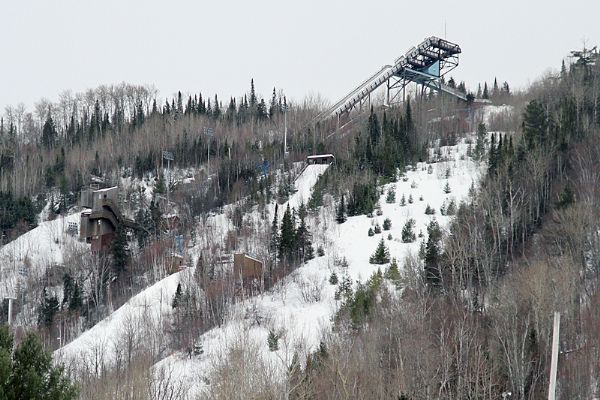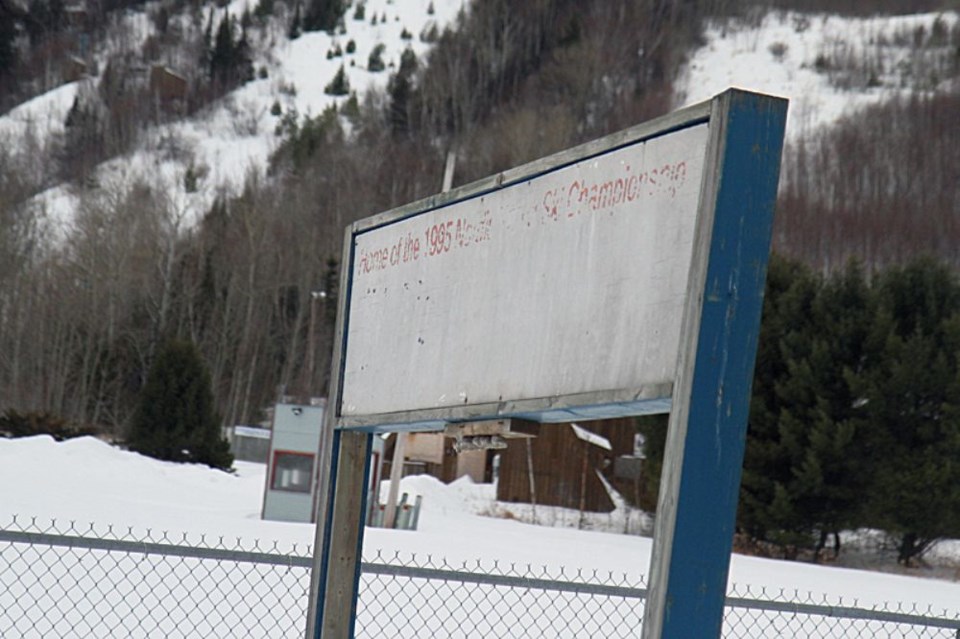THUNDER BAY – In 1995 the eyes of the world were on the Big Thunder National Training Centre.
For only the second time the FIS World Nordic Ski Championships were being held outside of Europe, as the world’s best skiers converged just outside Thunder Bay for the 10-day competition. Twenty years later Big Thunder is largely forgotten, frozen in time as the once state-of-the-art facility is left to deteriorate behind a locked gate.
Paul DeGiacomo, vice-chair of Friends of Big Thunder, is disappointed nothing has changed since the centre was shuttered in 1996.
“It’s dead. It is 20 years after the event and you see nothing going on at the site itself. It’s unfortunate this facility is wasting away to nothing,” he said just outside the gates on Monday.
“I believe this site has so much potential for non-traditional multi-uses that probably would make it flourish.”
Those uses could include mountain biking, extreme sports and concerts.
 DeGiacomo said there have been multiple occasions where inquiries were made about hosting events at the facility, with none coming to fruition.
DeGiacomo said there have been multiple occasions where inquiries were made about hosting events at the facility, with none coming to fruition.
A few years ago The Friends of Big Thunder worked with the business program at Lakehead University to conduct a business case study to determine if the facility had a feasible future
“It came very loud and clear that with the events that could be held here the site could be reopened,” DeGiacomo said. “It demonstrates no longer just an opinion that it should happen, but that the site could be reopened.”
The group has taken that business case and presented it to senior levels of government in hopes of securing a lifeline.
Five years ago the province opened a three-week window seeking expressions of interest to purchase the property. It is believed multiple parties submitted a proposal, though the government still retains ownership.
“We’re not too sure what the government is doing,” he said. “We’re trying to ask some questions, like how much it would cost to purchase the site…We certainly have entertained that idea with the province and we don’t seem to get a real clear answer about being able to purchase it outright.”
MPP Bill Mauro (Thunder Bay-Atikokan) said he has spent years trying to find a purpose for Big Thunder to take advantage of the property.
“Once I was appointed to the ministry I’ve asked them to look at what’s possible and when I was just an MPP I was asking what was possible. The work continues,” Mauro said.
“I’m still looking at what may be possible to revitalize the property. It’s such a beautiful piece of property, at the least, I’d hope we can do something to make it available to the public again.”
The facility, which includes ski hill and cross-country trails, was first opened in 1963 and was privately run until 1985 when it was purchased by the Ontario government. It received significant upgrades in the early 1990s to prepare for hosting the world championships.
The decision to close the facility was made in 1995 after the Mike Harris Progressive Conservatives were elected to power.

“By the time we’d formed government in 2003 you had seen eight or 10 years go by. Obviously by that time the buildings were not habitable, the equipment was left on the property and everything was basically in an unusable condition,” Mauro said.
“It would require significant investment and a lot of people don’t believe the value that was there then is there anymore.”
However, DeGiacomo disputes the notion of the facility being beyond repair.
While he acknowledged it would take considerable work, the base infrastructure is still present and many of the buildings are in great shape. He added the primary buildings remained heated and cooled, with the province footing at least a “six figure” cost per year.
DeGiacomo knows if Big Thunder will ever get a second life it would have to serve a different purpose. It would have to be self-sustainable and not reliant upon government funding
“The site has to be more than just a ski facility. For the site to reopen as just a ski facility it will go down the same path it did in 1996,” DeGiacomo said.
“You have to have a 12 month operation going steady with tons and tons of activities that would draw folks here. It can’t be a facility just for elite athletes. It would have to be for everyone to use.”



